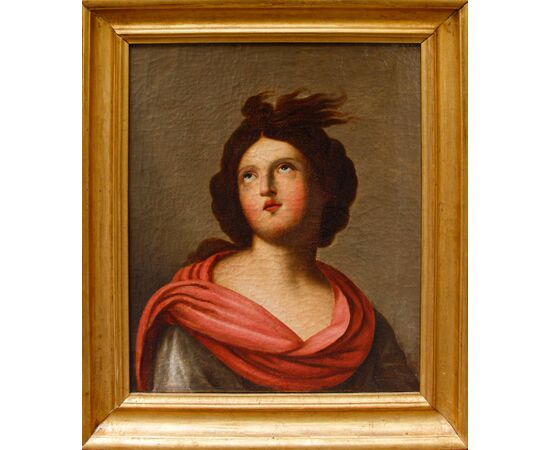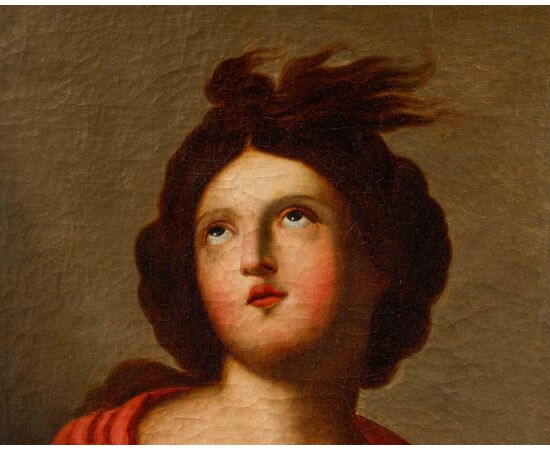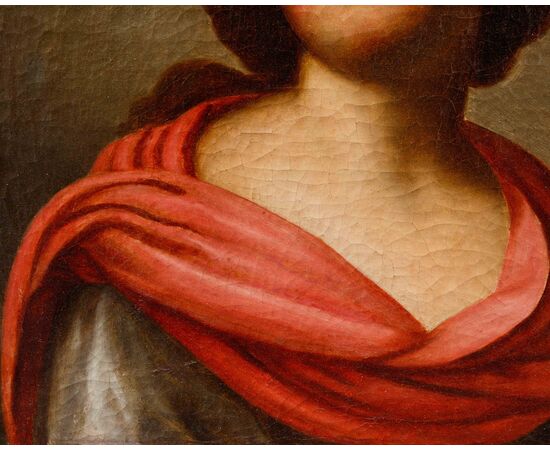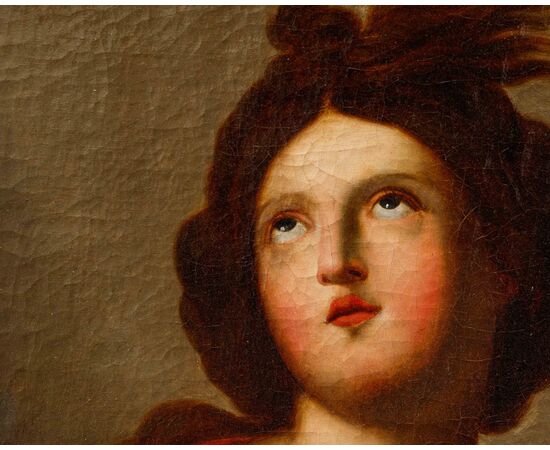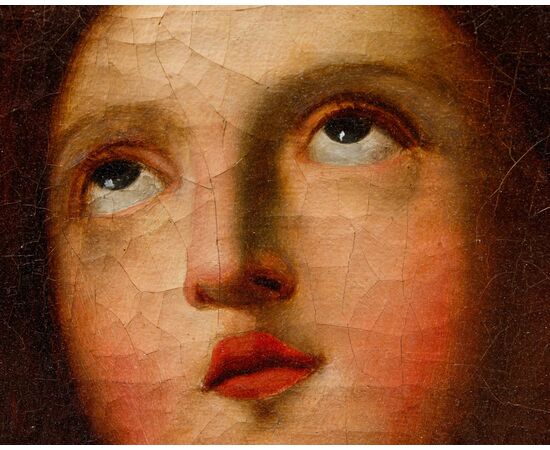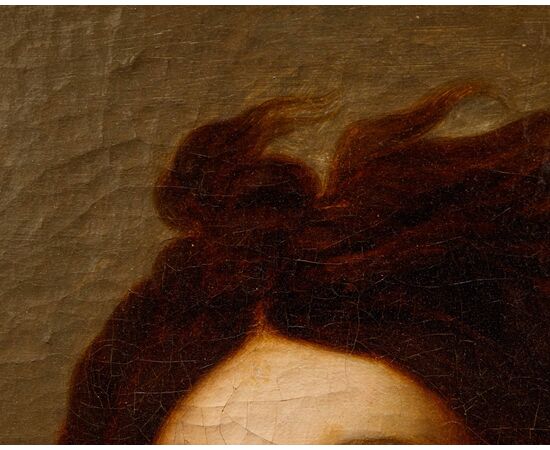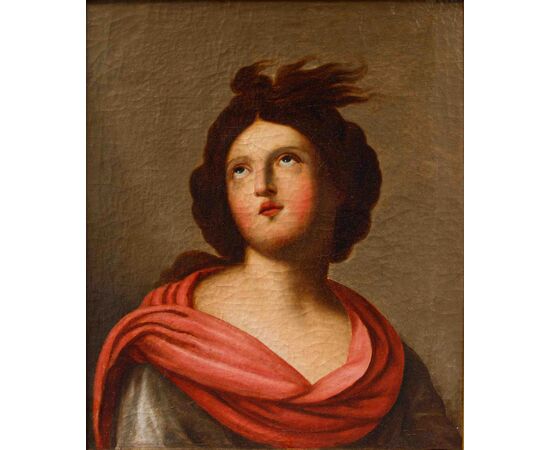19th century, Sibyl
19th century Sibyl Oil on canvas, cm 68 x 58 With frame, cm 75 x 65 This painting depicts a female figure, probably a sibyl, in a manner reminiscent of the style of Raphael and Bolognese classicism, which draws inspiration from Raphael's models, particularly the works of Guercino. Indeed, the painting bears clear similarities to masterpieces such as Raphael's Saint Catherine of Alexandria at the National Gallery in London and Guercino's Persian Sibyl and Samian Sibyl. The figure is presented in half-length, with her gaze directed upwards, displaying an expression of contemplation or divine inspiration, typical of depictions of Sibyls. Her dark hair is styled in voluminous locks that frame her face. The woman wears a cloak or veil of a deep pink color, which wraps around her shoulders and bust. The fabric has soft and realistic folds, adding depth to the figure. Beneath the colorful drapery, a dark-colored garment is visible, probably gray or brown. The background is neutral and of a uniform color that allows the figure to stand out. The light appears to come from above, illuminating the face and drapery in such a way as to create pronounced chiaroscuro, a distinctive feature of Baroque art and especially of artists such as Guercino, who excelled in modeling forms through the skillful use of light and shadow. In the ancient world, there were many diviners and prophets who issued predictions in the name of a god. At the oracle sites, there was a widespread belief that there had been many female interpreters of the divine word, not subject to the passage of time, isolated from the world, and not inclined to show themselves to human eyes; these were the Sibyls. The Pythia of Delphi is the best-known case, but the Latin writer Marcus Terentius Varro (116-27 BC) listed ten: the Persian, the Erythraean (from Erythrae, in Lydia), the Hellespontine, the Phrygian, the Cimmerian, the Libyan, the Delphic, the Samian, the Cumaean, and the Tiburtine (some depicted by Michelangelo in the Sistine Chapel). Some even thought that it was a single, immortal Sibyl who moved to different places.

